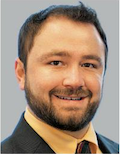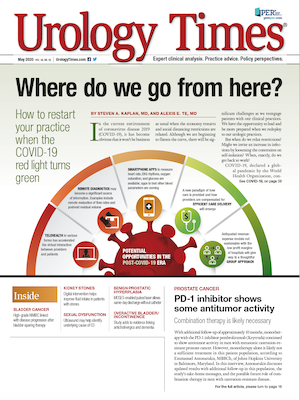Publication
Article
Urology Times Journal
CARES Act: Here’s what physicians should know
Author(s):
The bill provides coverage of nonreimbursable expenses attributed to COVID-19, writes Jeff Witz, CFP.

The CARES Act has many features designed to provide relief during the coronavirus disease 2019 (COVID-19) pandemic. What are the most important features I should know?
On March 27, President Trump signed into law the Coronavirus Aid, Relief, and Economic Security (CARES) Act in an effort to support US businesses and families. The bill was extensive and wide reaching.
The following details are the most important for individuals to know:
• Payments of $1200 (single/head of household) and $2400 (joint filers) will be sent to taxpayers within certain income limits. An additional $500 payment is available for each qualifying child. These payments will be determined based on your most recently filed tax return or Social Security benefit statement, if no return was filed. The amount of the payment is reduced by 5% of the amount by which income exceeds $75,000 (single), $112,500 (head of household), or $150,000 (joint filers).
• Required minimum distribution (RMD) rules are waived for 2020 distributions from IRAs, including inherited IRAs, and 2019 distributions taken in 2020, which had a required beginning date of April 1, 2020. RMDs are also waived for 2020 distributions from certain defined contribution plans including 401(k), 403(b), 457(b), and IRA-based plans.
• Distributions from IRAs and qualified retirement plans of up to $100,000 received during 2020 for COVID-19–related purposes are allowed without a 10% penalty for individuals aged below 59.5 years. They are taxable evenly over 3 years beginning with the year of distribution and may be recontributed within 3 years. Related purposes include a COVID-19 diagnosis for you, your spouse, or dependent, and financial hardship as a result of business closures, reduced work hours, layoff, furlough, or lack of childcare.
• Loans of up to $100,000 or 100% of the account value, whichever is less, are allowed from qualified retirement plans.
• Student loan payments and accrual of interest under certain federal loan programs are suspended through September 30, 2020.
• A charitable deduction of up to $300 is allowed for those who do not itemize their deductions. The adjusted gross income limitation is waived, allowing you to offset more of your taxable income. These two items apply only to cash contributions and are not available for contributions to donor advised funds or other supporting organizations.
Related - COVID-19 and market fluctuation: What you should do
Provisions that may impact physicians in particular include the following:
• Small businesses, including medical practices, with no more than 500 employees are eligible to apply for the Small Business Administration (SBA) Payroll Protection Program. This allows a small business to apply to an SBA-approved lender for a loan of up to 250% of its average monthly payroll costs to cover 8 weeks of payroll, as well as help with other expenses like rent, mortgage payments, and utilities. The maximum loan amount is $10 million. Sole proprietors, independent contractors, and other self-employed individuals are eligible. A loan can be forgiven based on the business maintaining employee and salary levels. For any portion of the loan that is not forgiven, the terms include a maximum duration of 10 years and a maximum interest rate of 4%.
• Employers and self-employed individuals may defer payment of the employer share of applicable Social Security taxes beginning on the date of enactment through the remainder of 2020. The deferred amount may be paid over 2 years, half in 2021 and half in 2022. These taxes are being deferred, not forgiven, so businesses should be mindful about planning to pay these tax liabilities when they are eventually due.
• $100 billion has been made available through the Public Health and Social Service Emergency Fund to provide immediate financial relief by covering nonreimbursable expenses attributable to COVID-19. Health care entities, including physician practices, that provide health care, diagnoses, or testing are eligible. Nonreimbursable expenses attributable to COVID-19 qualify for funding. Examples include increased staffing or training, personal protective equipment, and lost revenue.
• Physicians who provide volunteer medical services during the public health emergency related to COVID-19 have liability protections. These new protections are in addition to those provided by the Volunteer Protection Act of 1997.
The information in this column is designed to be authoritative. The publisher is not engaged in rendering legal, investment, or tax advice.





















